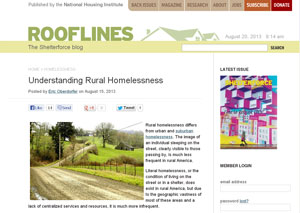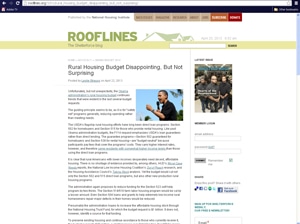Rural Rental Assistance Needs USDA’s Support to Survive
by Leslie Strauss
The cost of USDA’s Section 521 Rental Assistance program isgrowing every year. After afunding crisis hit the program inSeptember, Congress increased its funding for fiscal year 2014, giving USDA time to reduce program costs, cut program spending, or work a little magic.
Magic seems unlikely. And some possibilities are clearly unpalatable. No one wants tenants to lose their homes because their aid ends and their rents increase. No one wants landlords to leave the affordable housing business because they can’t afford to operate with reduced income. No one wants funds to be shifted away from other rural housing programs to meet Rental Assistance needs. Fortunately, there are other options.

 President Obama’s
President Obama’s 

 Unfortunately, but not unexpectedly, the
Unfortunately, but not unexpectedly, the